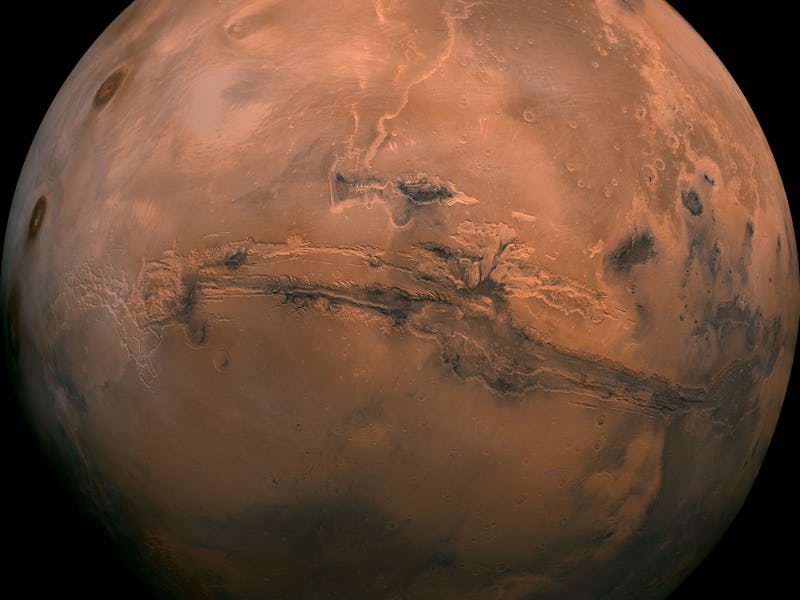NASA Challenges Scientists to Grow Human Organs on Mars
The Vascular Tissue Challenge could mean big things for deep-space travel.

NASA just fired the starting gun on one of its prestigious Centennial Challenges. Beginning this week, scientists will compete in the Vascular Tissue Challenge to be one of the first three teams to “successfully create thick, metabolically-functional human vascularized organ tissue in a controlled laboratory environment” that survives at least 30 days. It’s never been done before.
Thin vascular tissue has been created, and it’s not without its merits, but what NASA and the Methuselah Foundation’s New Organ Alliance, its partner in this Centennial Challenge, are looking for here is tissue more than .39 inches thick. Such a breakthrough has enormous potential both in space and on Earth. Thick vascularized cells could allow scientists to mitigate damage to human tissue in hostile environments, and to literally grow new organs. In the future, this could be how astronauts on deep-space missions — without access to traditional organ replacement — stay healthy.
“We could grow organs for people in space stations.”
NASA is offering a $500,000 prize, split between the first three teams to successfully produce tissue of the requisite thickness that maintains at least an 85-percent survival rate during the 30-day trial. If by September of 2019 no one’s managed it, the challenge will close.
“This tissue could be used to replace organs of people on Mars one day,” said NASA Centennial Challenges Program Manager Monsi Roman. “That’s the dreaming part, you know? We could grow organs for people in space stations. It would be absolutely incredible, anyone who needs an organ would have access to an organ.”
Of course, that would be true on Earth as well; in all likelihood, thick vascular tissue would lead to organ replacement for civilians long before we sent it onto space. In the slightly nearer future, the challenge winners’ achievements could be used as models to send live tissue into deep space — before risking actual astronauts — in order to assess the damage on various kinds of organs.
The researchers are what Roman called “the cream of the crop, but it’s still an uphill battle” — no one’s been able to do this before, and what NASA’s offering really isn’t that much money in the scheme of things. Roman said she’s hoping for a successful tissue sample in a year or so, but that it’s really impossible to say for sure what will happen. After a team (or teams) do create the tissue, though, NASA essentially gives the members the money and sends them on their way. They don’t sign away their intellectual property rights, or any kind of contract at all.
“NASA, our job is done then,” Roman said. “But the Department of Defense, the NIH, a lot of groups are watching this to see what happens. People might ask why we do it this way, instead of just giving a grant to one of the big names and letting them come back with the result - the goal is to reach out to groups that aren’t necessarily associated with aerospace industries at all. We’re trying to engage the nation to solve these problems. That’s why Centennial Challenges exist; that’s what makes it cool.”